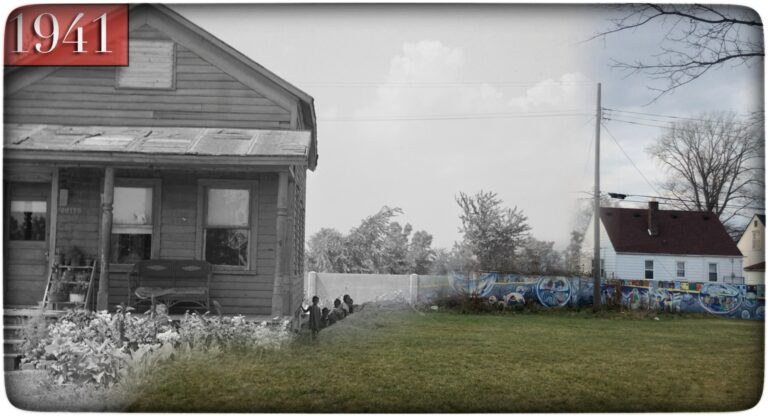Redlining and the Walls of Prejudice
in the African American Experience
Birwood Wall, Detroit - 1941
This journey through time takes us back to 1941. A wall is constructed in Detroit, Michigan, and we will explore why. While the nations of the world were divided against each other in World War II, so was the city of Detroit.
Institutionalized racism was rampant and discrimination was rife. This TimeShift is focused on a wall that was built between two very different neighborhoods in Northwest Detroit.
Topics include the Great Migration, domestic impact of World Wars I and II, domestic conflict and tension, segregation, institutionalized racism, unfair housing practices, the New Deal, Detroit’s Sojourner Truth homes, Black Americans serving in the military, the Arsenal of Democracy, Detroit civil unrest in the 1940s and 1960s, growth of the American middle class, redlining, and Detroit’s white flight.
The wall that was built to divide communities still stands today as a symbol of unity, and a living history of the struggle for Civil Rights in the 20th century. Learn more about this rare remaining relic of Northern segregation.
Location
Quick Facts
The Birwood Wall is about half-mile long. It runs from 8 Mile Road, south to Outer Drive.
A letter featured in this TimeShift video documents the establishment of the United States first Officers training facility exclusively for Blacks. The letter is available in the “Supporting Documents” page.
In 2006, the grey relic was given a facelift. Members of the 8 Mile and Wyoming neighborhood painted the wall to reflect the Black American experience. In 2021, the Birwood Wall finally took its place on the National Register of Historic Places.
There are other segregatory walls in Detroit. Just a few blocks southeast of the Birwood Wall is the Pembroke Wall. Its latitude is 42° 26′ 17.41″ N and its longitude is 83° 9′ 36.97″ W. It runs behind homes on the south side of Pembroke Avenue between Wyoming Avenue and Cherrylawn Street.
The New Deal
President Roosevelt’s fireside chat of May 7, 1933 explained the New Deal. As it is discussed in the TimeShift video, the plan was designed to lift America out of recession and make home ownership more accessible to Americans. You can listen to the entire fireside chat below.
Shelley v. Kraemer
The TimeShift video explores how homeownership was much more difficult to achieve for persons of color. The 1948 Supreme Court case that ended discriminatory housing practices is the case of Shelley v. Kraemer. You can learn more about this landmark case in the short, four-minute, video below.
Quick Quiz

Time's up
